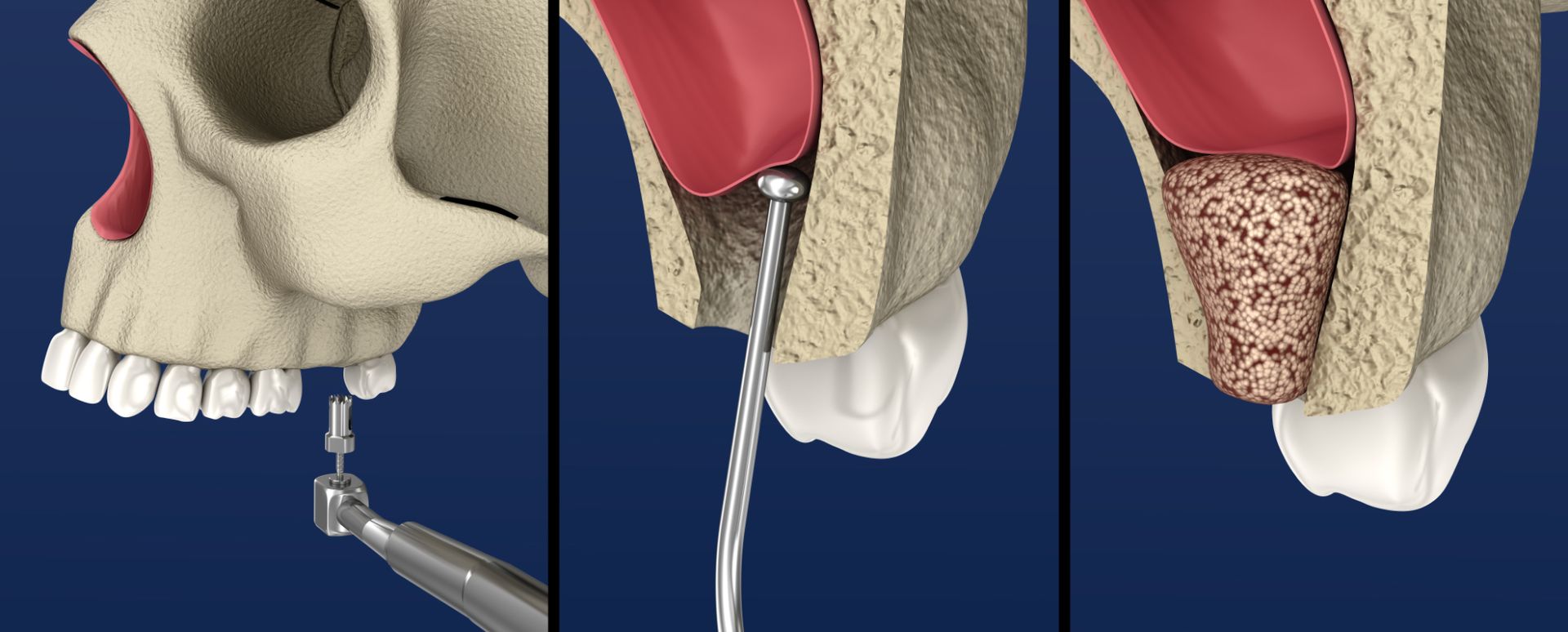Sinus Lift Procedure Cost: What to Expect & How to Save
Wondering about the sinus lift procedure cost? On average, you can expect to pay between $1,500 and $5,000. Factors such as the complexity of the procedure and the surgeon’s expertise can influence this cost. This article will guide you through the detailed cost breakdown, potential savings, and financing options available.
Key Takeaways
- The cost of a sinus lift procedure varies based on case complexity, surgeon experience, and geographical location, with total expenses including consultation, imaging, bone grafting, and post-operative care.
- Insurance may cover 50-80% of sinus lift costs, and utilizing Flexible Spending Accounts (FSA) or Health Savings Accounts (HSA) can further reduce out-of-pocket expenses.
- Recovery after a sinus lift typically takes four to nine months, and following post-operative care instructions is essential to minimize risks and complications.
Understanding Sinus Lift Costs
The cost of a sinus lift procedure varies significantly due to several factors, including sinus lift cost. The complexity of the case is a primary determinant, with more complex procedures requiring additional resources and time, thus increasing the overall cost. The surgeon’s experience also influences the price; highly experienced surgeons often charge higher fees for their expertise and quality of care.
Geographical location also plays a significant role in determining the cost. Patients in major cities or high living-cost areas may face higher prices compared to those in less urbanized regions. Being aware of these variations can help you prepare financially for the procedure.
Cost Breakdown of a Sinus Lift Procedure
Analyzing the costs involved in a sinus lift procedure offers a clearer picture of the expenses. The initial evaluation, including a consultation with the oral surgeon, typically costs between $50 and $300. Panoramic dental x-rays, crucial for the pre-operative assessment, usually range from $100 to $150.
Bone grafting is a significant part of the procedure, with costs varying widely. Depending on the material used and the complexity, expenses can range from $200 to $3,200.
Post-operative care, including follow-up visits, prescription medications, and recovery-related expenses, adds to the total cost. Considering all these individual costs helps in planning for the procedure. Understanding each component allows better anticipation of the overall expense and exploration of budgeting options.
Factors Affecting Sinus Lift Costs
Various factors influence the cost of a sinus lift procedure. The choice of bone graft material is significant, with synthetic options often being the least expensive. The health of your existing teeth and the complexity of the case also impact the cost, as more complex cases require additional resources and time.
Geographical location and the surgeon’s experience further impact the cost. Urban areas typically feature higher prices, and experienced surgeons often charge premium rates. Being aware of these factors helps in making informed decisions and planning your budget.
Insurance Coverage for Sinus Lifts
Insurance coverage can significantly reduce out-of-pocket costs for a sinus lift procedure. However, coverage is often limited, typically covering only 50-80% of the costs. Submitting a preauthorization request to your insurance provider helps determine specific coverage.
Flexible Spending Accounts (FSA) and Health Savings Accounts (HSA) can also reduce out-of-pocket expenses by allowing the use of pre-tax dollars for the procedure. Exploring these options can make the sinus lift procedure more affordable.
Financing Options for Sinus Lift Surgery
Financing options can make a sinus lift procedure more financially manageable. Many dental clinics offer payment plans that spread the cost over time, often interest-free. CareCredit provides specialized healthcare credit cards for sinus lift procedures, typically featuring interest-free promotional periods.
Personal loans designed for healthcare expenses are another viable option, helping finance the procedure without depleting your savings. Exploring these financing options can help you find a suitable solution for your financial situation.
What is a Sinus Lift?

A sinus lift is a surgical procedure designed to enhance bone volume in the upper jaw to support dental implants and facilitate sinus augmentation. It involves elevating the sinus membrane to create space for bone grafting materials, often necessary for patients with insufficient bone due to tooth loss or other factors.
Understanding the purpose and steps involved in a sinus lift can alleviate some anxiety associated with the procedure. It’s a crucial step for many patients looking to get dental implants and restore their smiles.
Who Needs a Sinus Lift?
Sinus lifts are typically necessary for patients with insufficient bone in the upper jaw due to tooth loss. Various factors such as periodontal disease, birth defects, or cancer can lead to bone deficiency. Patients with one or more missing teeth often require a sinus lift to create enough bone for dental implants.
The jaw can change significantly after prolonged tooth loss, affecting bone thickness near the sinus cavity space. If a patient’s sinuses are too close to the upper jaw, additional space may be needed for implants, necessitating a sinus lift. These criteria can help determine if you need a sinus lift.
The Sinus Lift Procedure
The sinus lift procedure starts with a thorough pre-operative assessment, including imaging of the sinus anatomy to reduce surgical risks. An incision is made in the gum tissue where the back teeth were to access the sinus. The sinus membrane is then elevated, and bone graft material is added to increase upper jaw bone volume during the dental procedure.
To ensure patient comfort, various methods can be used, including local anesthesia, general anesthesia, nitrous oxide sedation, or IV sedation.
After the procedure, a minimum of 6 months is typically required for full recovery, during which patients need to follow specific post-operative care instructions to ensure proper healing.
Risks and Complications of Sinus Lift Surgery
Like any surgical procedure, a sinus lift comes with risks and complications. Major risks include puncturing or tearing the sinus membrane, the biggest risk during the procedure. Potential complications after surgery can include infections, graft failure due to inadequate blood flow, and long-term sinus issues like chronic sinus infection.
Choosing an experienced oral surgeon can significantly reduce these risks. Proper techniques and careful patient selection are crucial for minimizing complications. Being aware of these risks can help you make an informed decision and prepare for potential challenges.
Recovery After a Sinus Lift
Recovery after a sinus lift can take between four to nine months before dental implants can be placed. Common side effects include swelling and light bleeding. During the first 48 hours, patients should keep their head elevated and apply pressure on gauze to control bleeding.
Patients should avoid hard or crunchy foods for at least two weeks post-surgery and refrain from blowing their noses for at least four weeks to prevent dislodging the sinus graft. Proper post-operative care and following the surgeon’s instructions can significantly enhance recovery and minimize complications.
Alternatives to Sinus Lift Procedures
Alternatives to sinus lift procedures may suit some patients. Short dental implants, which are 8mm or less in length, can eliminate the need for a bone graft or sinus elevation. However, mini dental implants are not as strong as standard implants and may have higher failure rates.
Other options include not replacing the tooth or using different dental implants, each offering varying levels of stability and security. Discussing these alternatives with your oral surgeon can help determine the best option for your specific needs.
Choosing the Right Oral Surgeon

Selecting the right oral surgeon is crucial for the success of your sinus lift procedure. Verify the surgeon’s education from accredited dental schools and additional surgical training. Experience is key; ideally, the surgeon should have performed the specific surgery multiple times.
Checking for professional affiliations and patient reviews can provide insights into the surgeon’s reputation and commitment to the field.
Ensuring the surgeon’s practice is conveniently located and that you feel comfortable communicating with them is also essential. These steps can help you choose a qualified and trustworthy oral surgeon for your procedure.
Summary
Understanding the costs and details of a sinus lift procedure can help you make informed decisions and plan accordingly. From the initial evaluation to recovery, each step has associated costs that need to be considered. Factors such as the complexity of the case, the experience of the surgeon, and geographical location can significantly impact these costs.
By exploring insurance coverage, financing options, and alternatives to sinus lifts, you can find ways to make the procedure more affordable. Choosing the right oral surgeon is crucial for minimizing risks and ensuring a successful outcome. With the right information and preparation, you can confidently navigate the process and achieve the best possible results.




